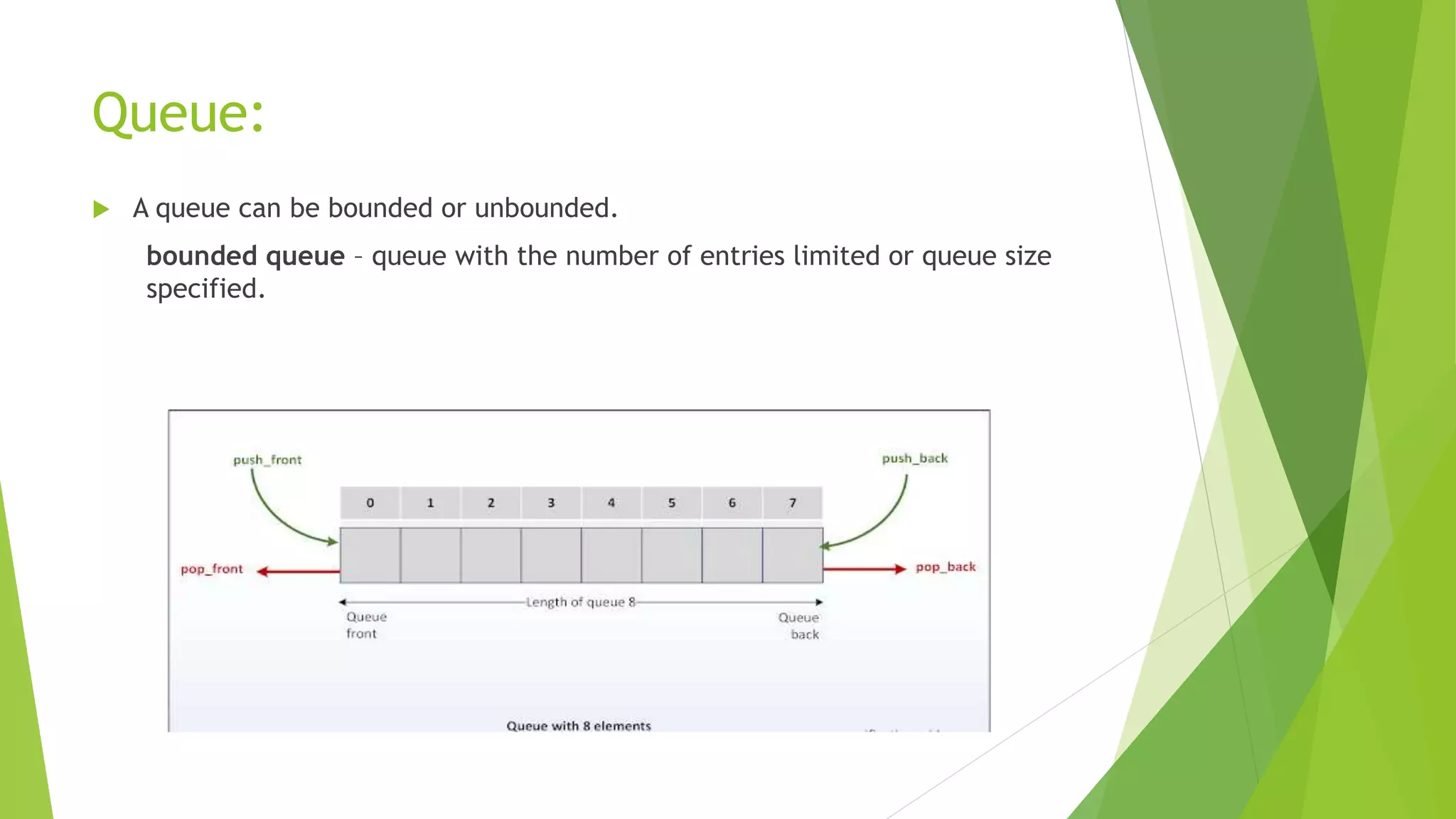This document provides an introduction and overview of System Verilog. It discusses what System Verilog is, why it was developed, its uses for hardware description and verification. Key features of System Verilog are then outlined such as its data types, arrays, queues, events, structures, unions and classes. Examples are provided for many of these features.

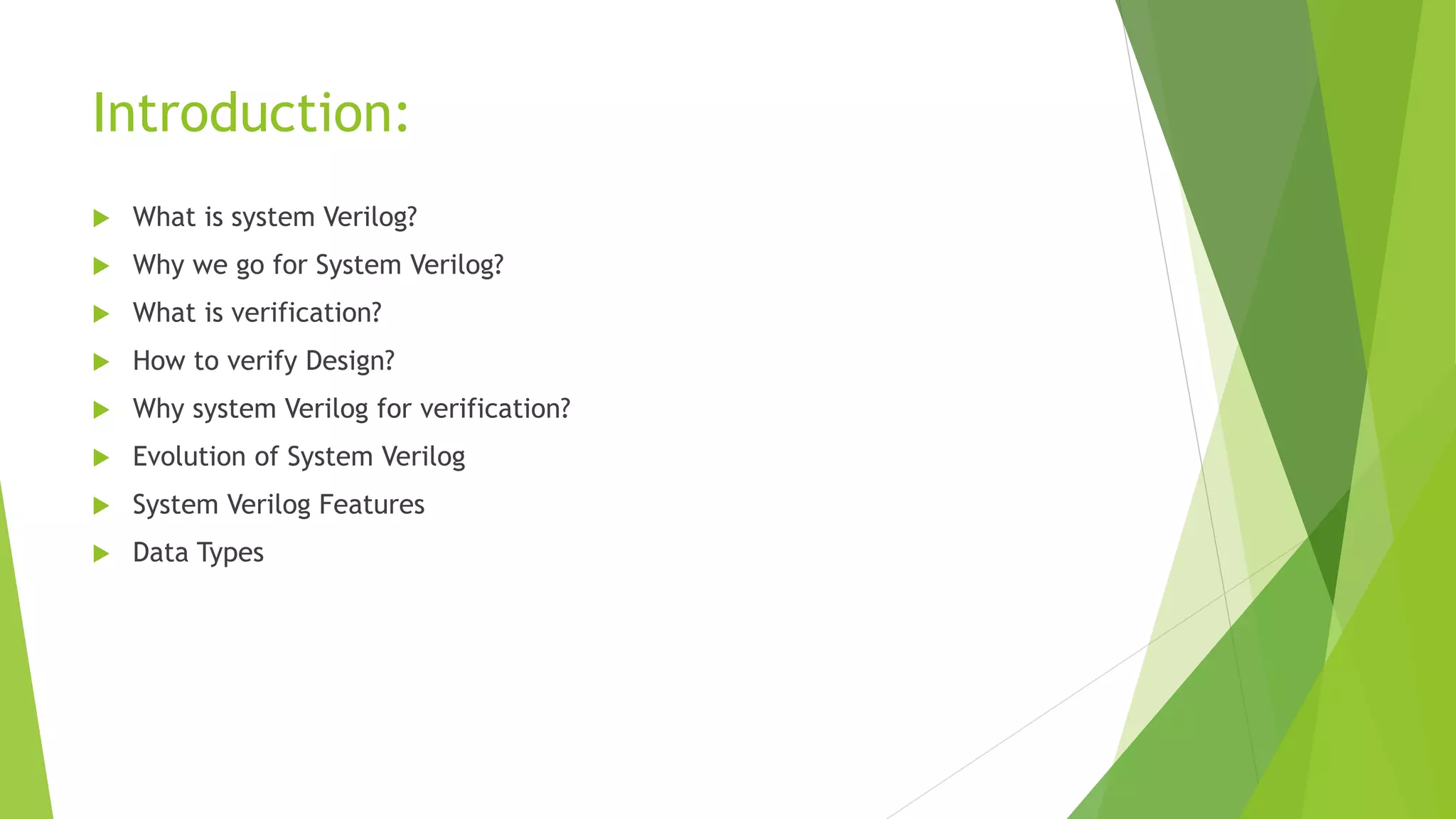
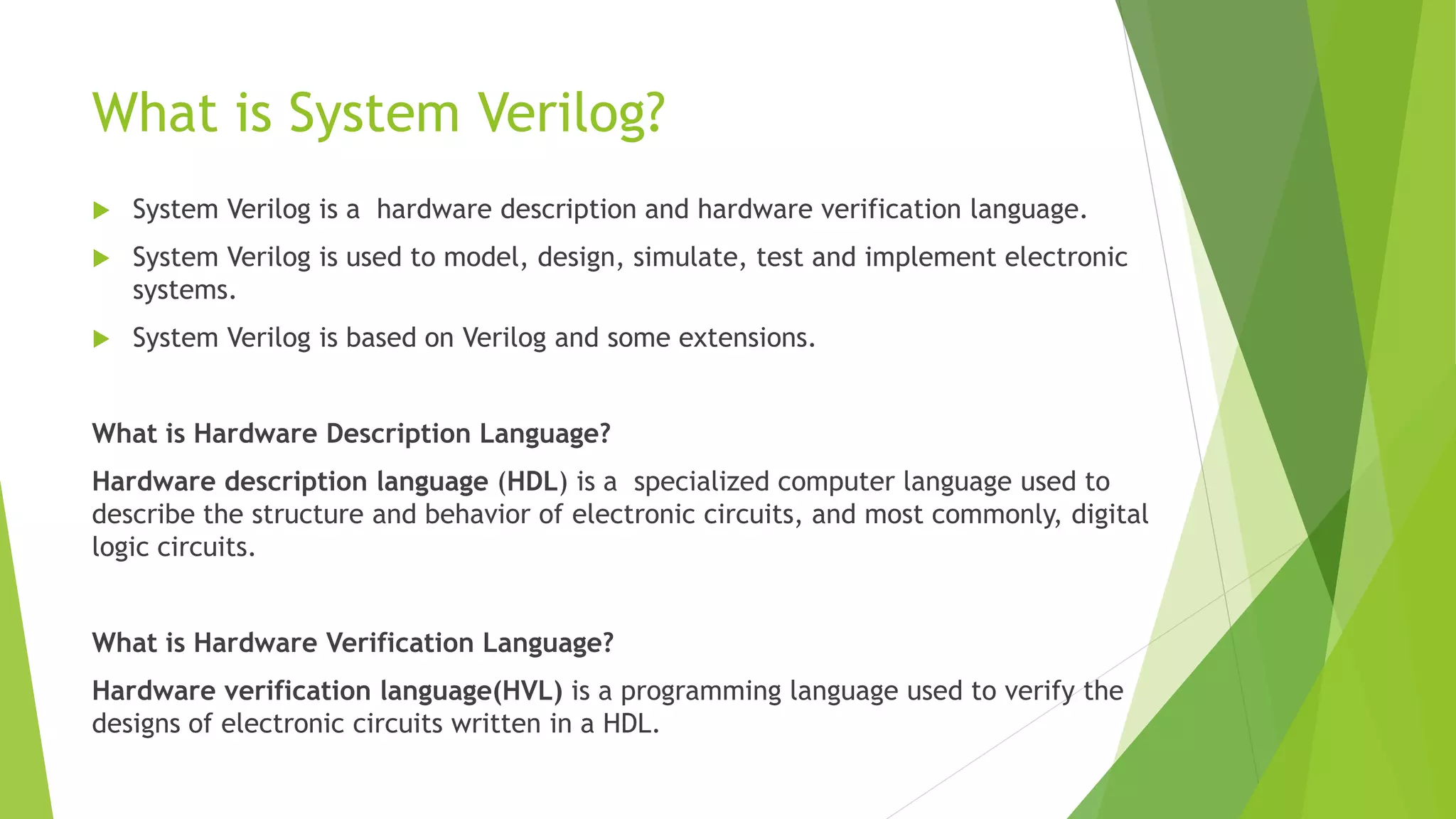


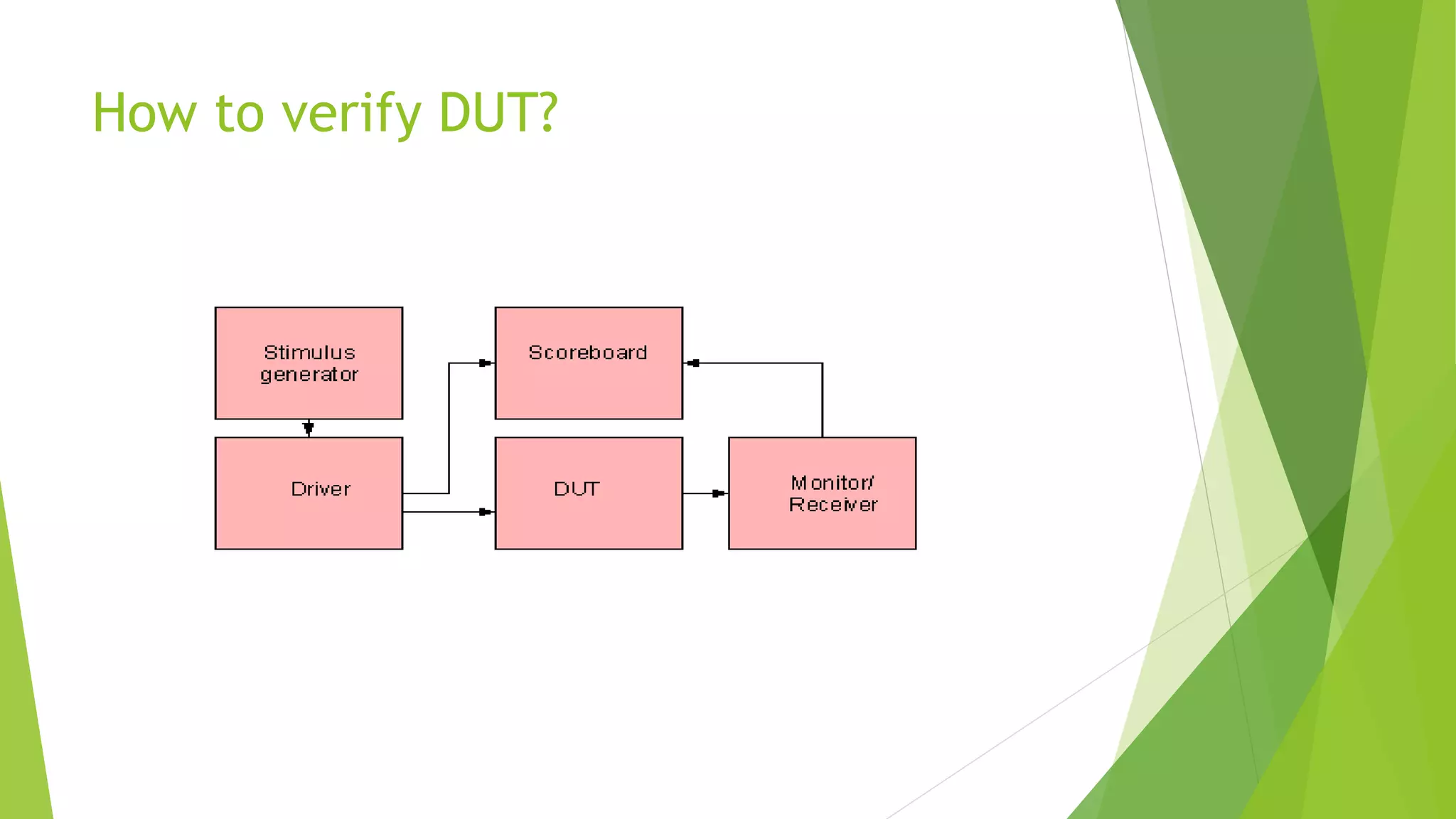
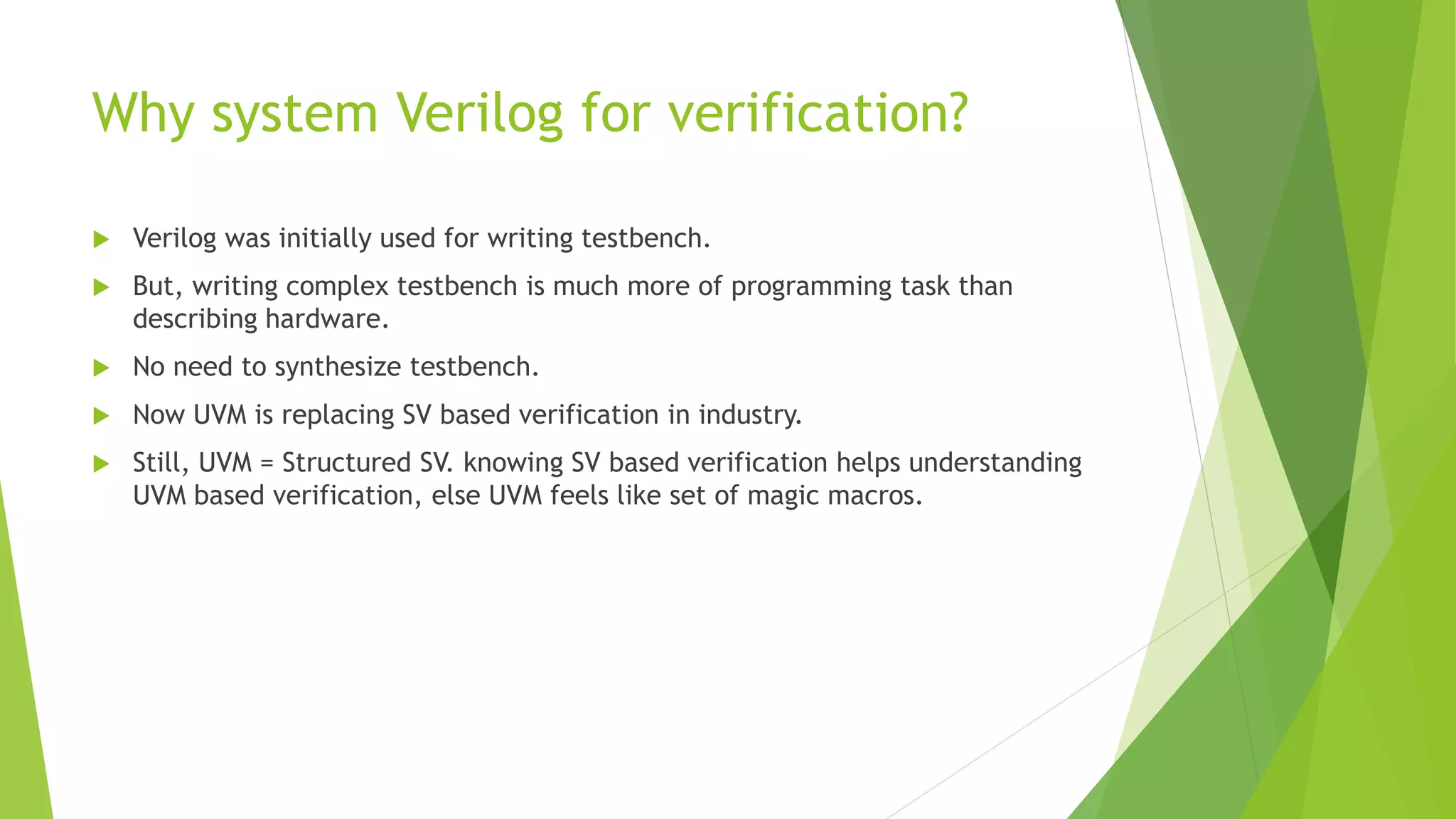

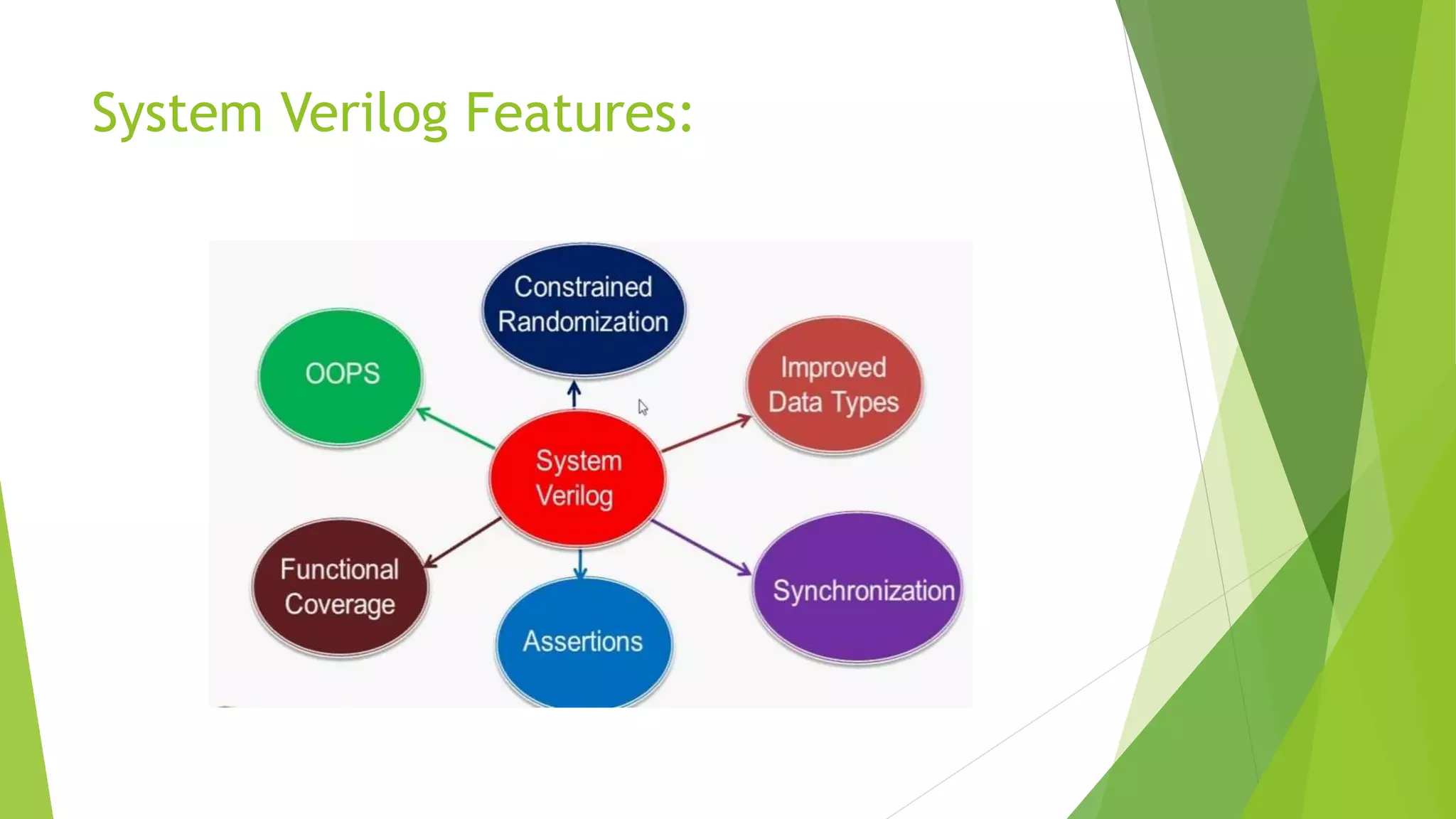
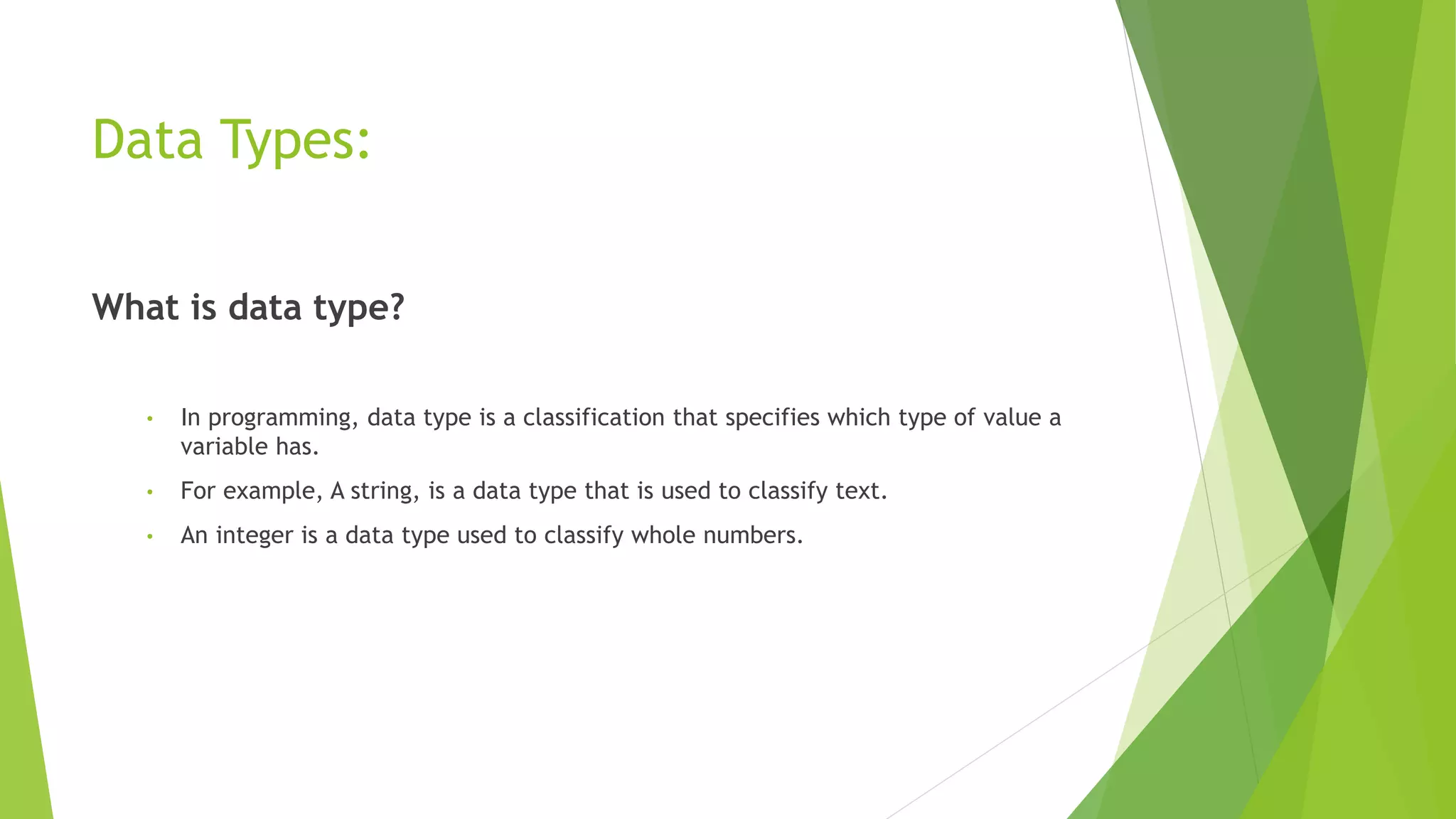

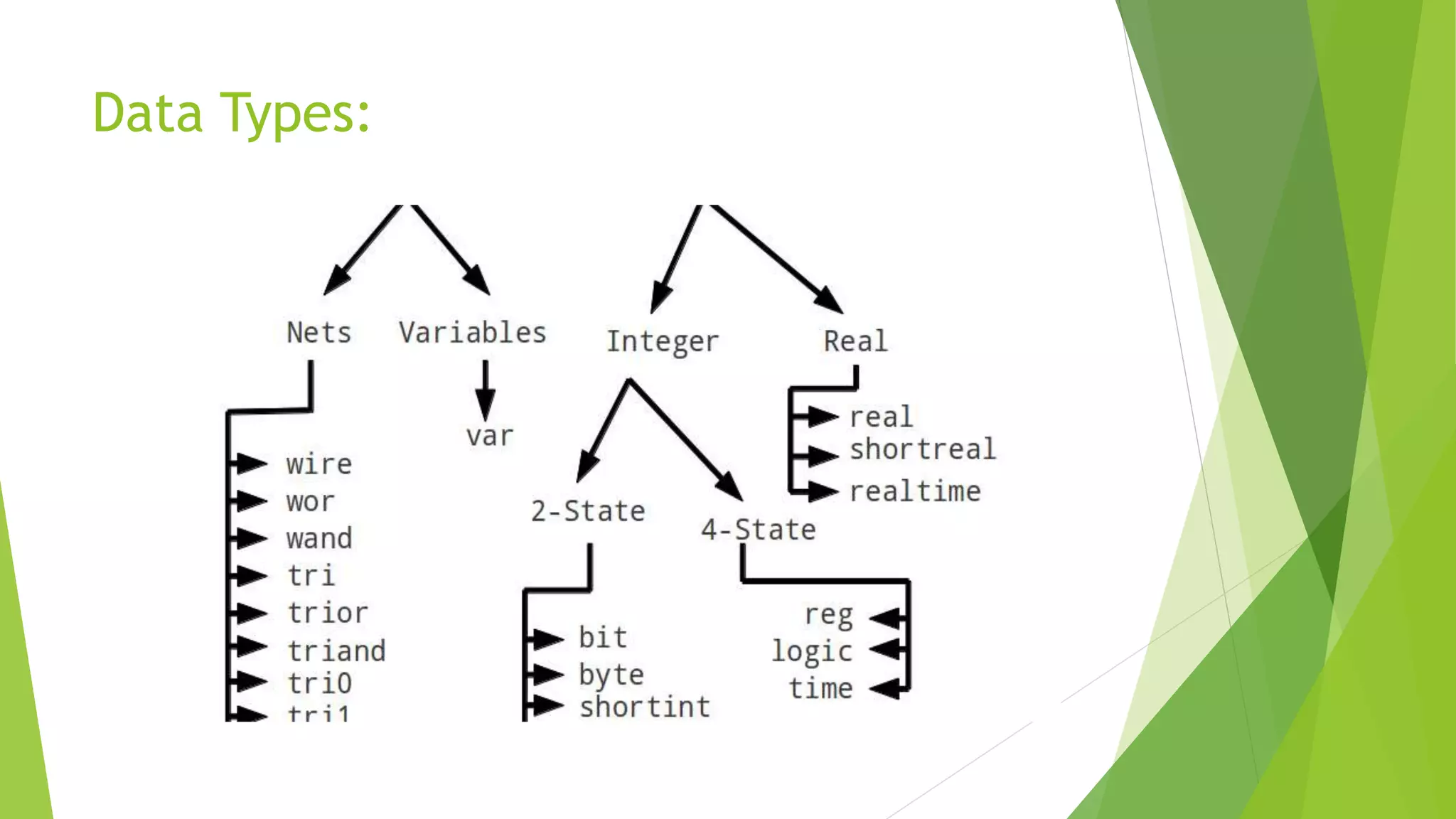
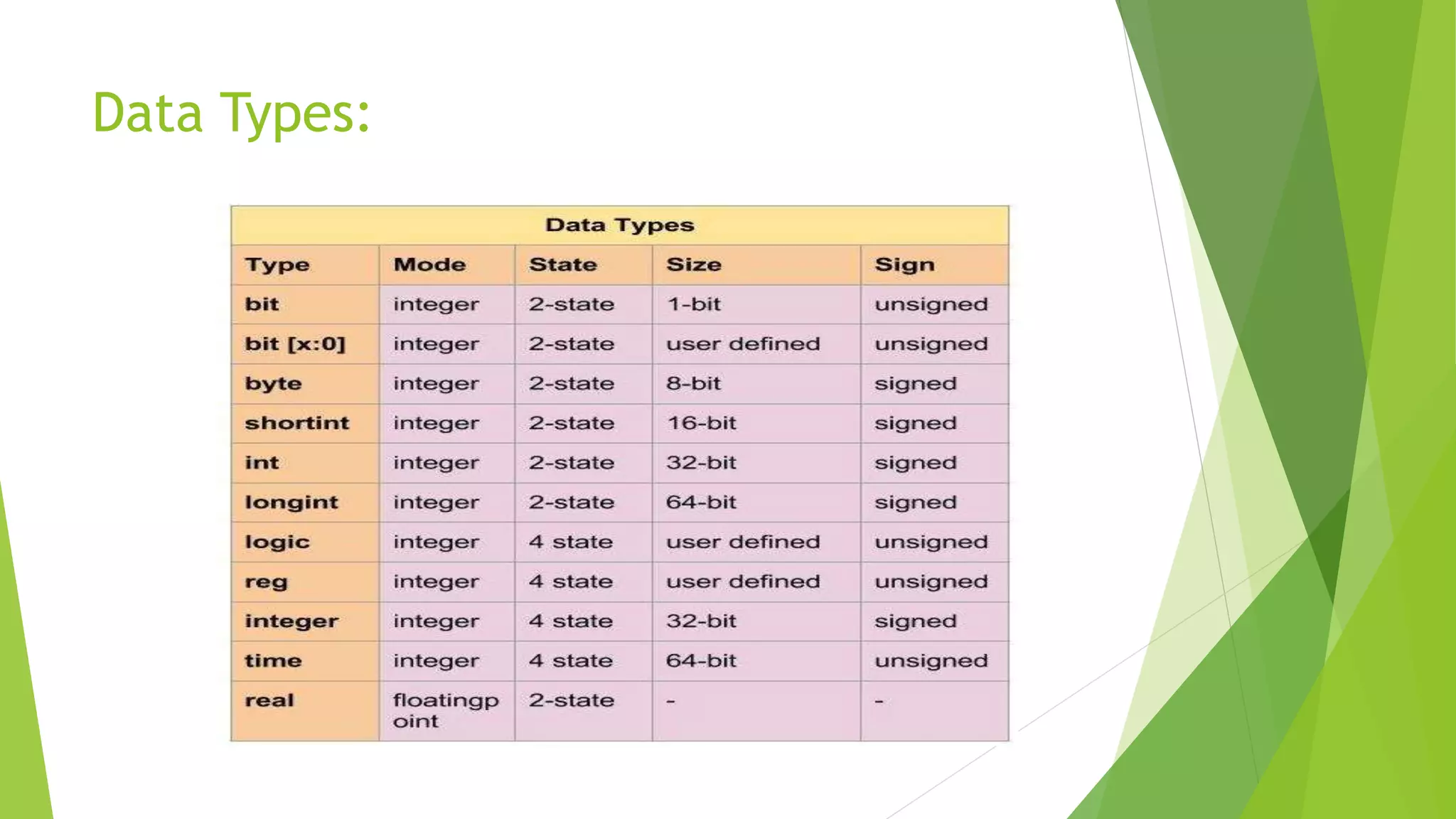
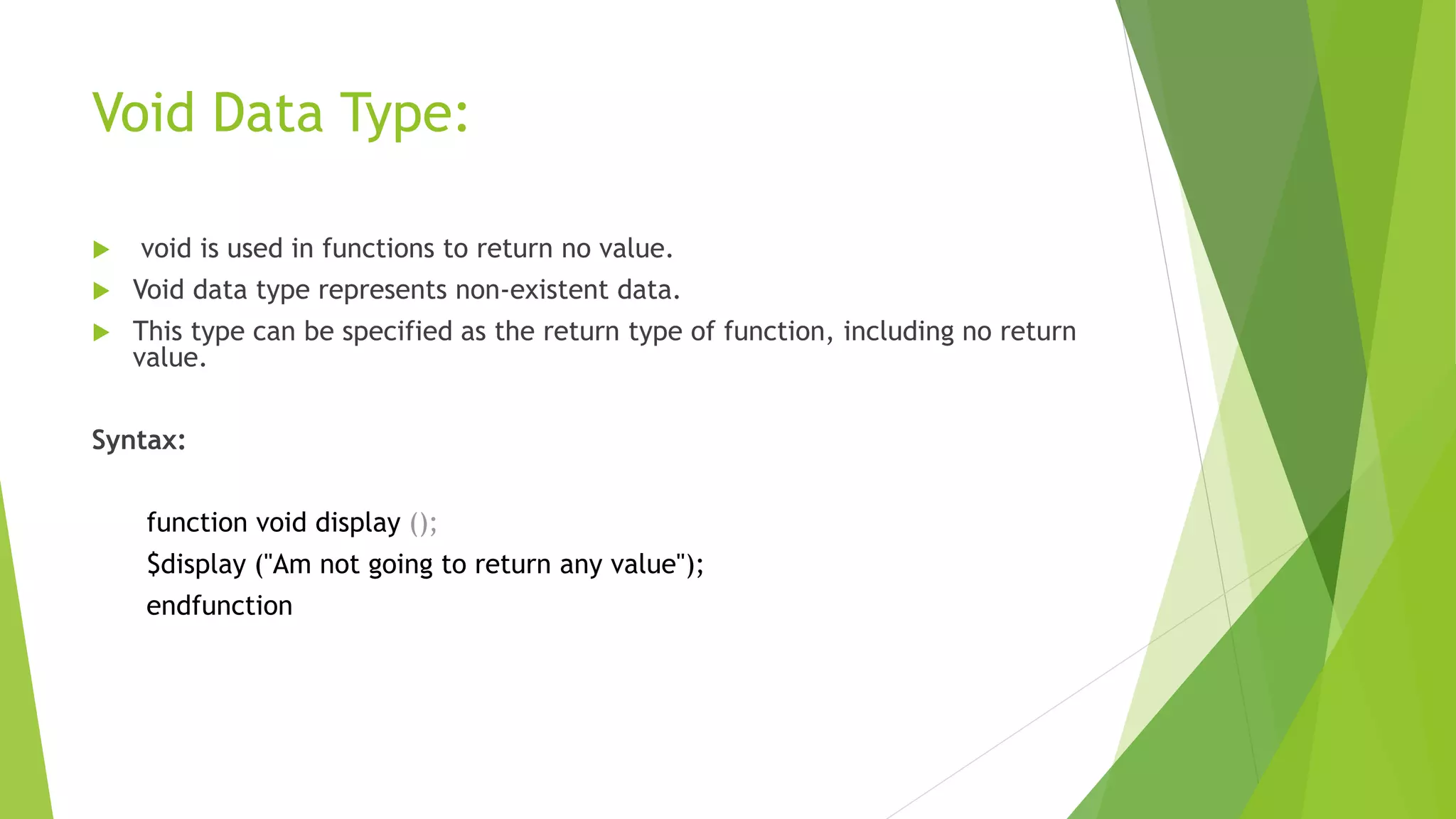
![Arrays:
An array is a collection of variables, all of the same type, and accessed using the
same name plus one or more indices.
There are different types of arrays:
Examples:
int array1 [6]; //fixed size single dimension array
int array2 [5:0]; //fixed size single dimension array
int array3 [3:0][2:0]; //fixed size multi dimension array
bit [7:0] array4[2:0]; //unpacked array declaration
bit [2:0][7:0] array5; //packed array declaration
bit [2:0][7:0] array6 [3]; //mixed packed and unpacked array](https://image.slidesharecdn.com/systemverilogbychinnifinal-201114060759/75/Introduction-to-System-verilog-15-2048.jpg)
![Fixed array:
In fixed size array, array size will be constant throughout the simulation,
Once the array is declared no need to create it.
By default, the array will be initialized with value ‘0’.
Single Dimension array:
int array1 [6]; //Compact declaration
int array2 [5:0]; // Verbose declaration
Two Dimension array:
int arr[2][3];
Three Dimension array:
int arr[2][2][2];
Array assignment:
array = '{ '{0,1,2,3},'{4,5,6,7},'{8,9,10,11}};](https://image.slidesharecdn.com/systemverilogbychinnifinal-201114060759/75/Introduction-to-System-verilog-16-2048.jpg)
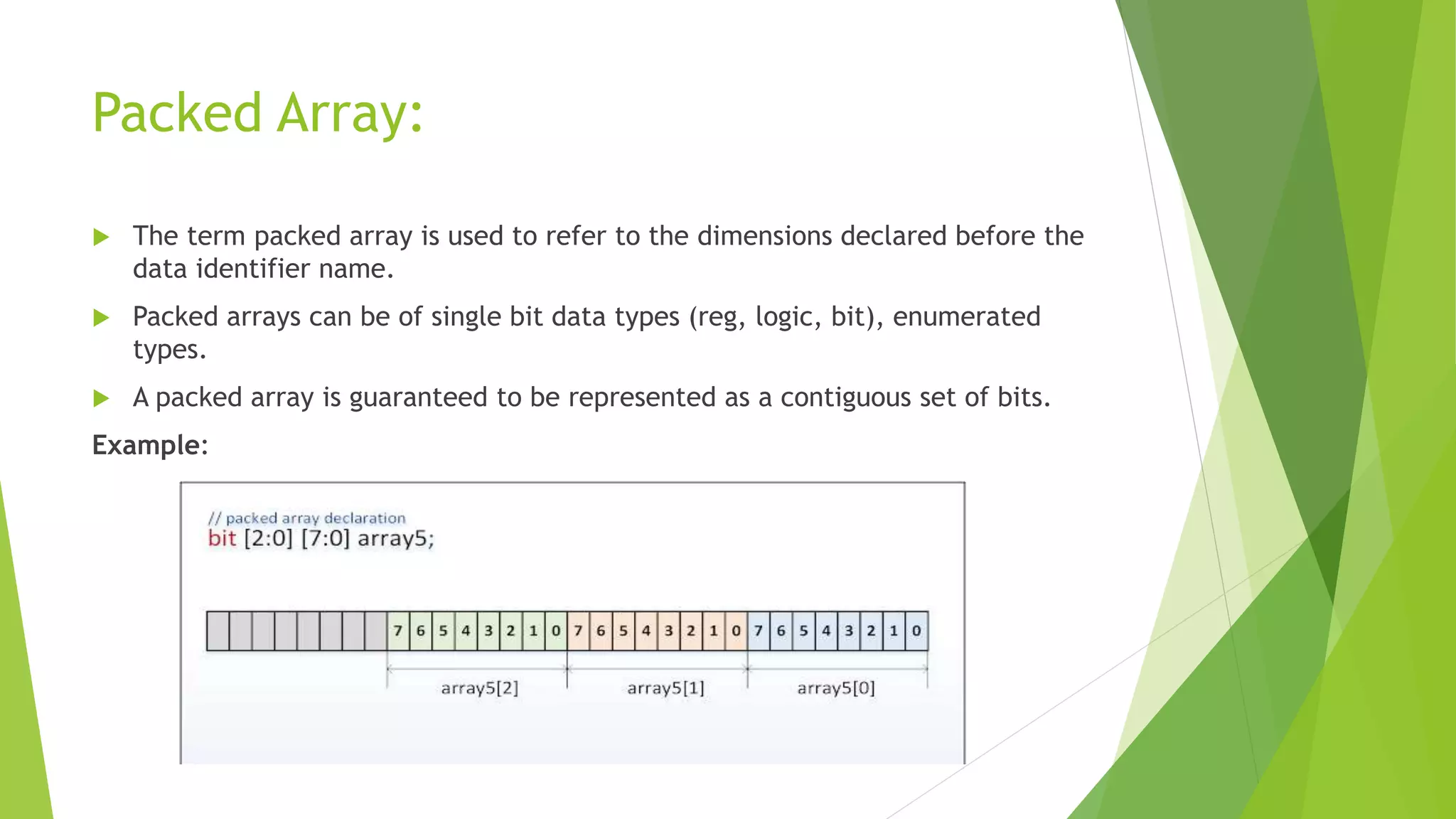
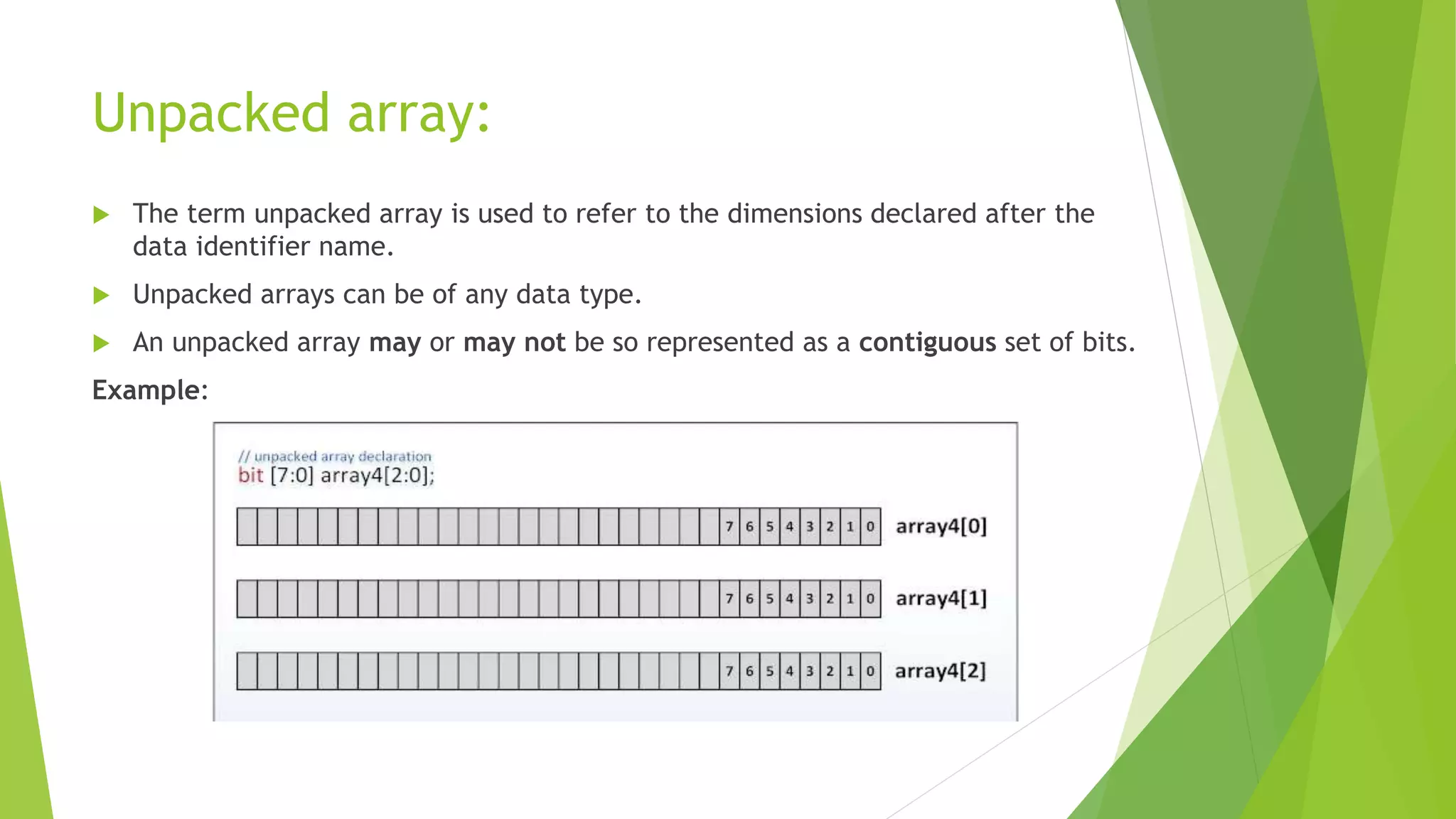
![Dynamic array:
A dynamic array is one dimension of an unpacked array whose size can be set or
changed at run-time.
Dynamic array is Declared using an empty word subscript [ ].
The space for a dynamic array doesn’t exist until the array is explicitly created at
run-time, space is allocated when new[number] is called.
The number indicates the number of space/elements to be allocated.
Dynamic arrays are useful for contiguous collections of variables whose number
changes dynamically.
Syntax:
Data_type array_name[];
Methods:
new[ ] –> allocates the storage.
size( ) –> returns the current size of a dynamic array.
delete( ) –> empties the array, resulting in a zero-sized array.](https://image.slidesharecdn.com/systemverilogbychinnifinal-201114060759/75/Introduction-to-System-verilog-19-2048.jpg)
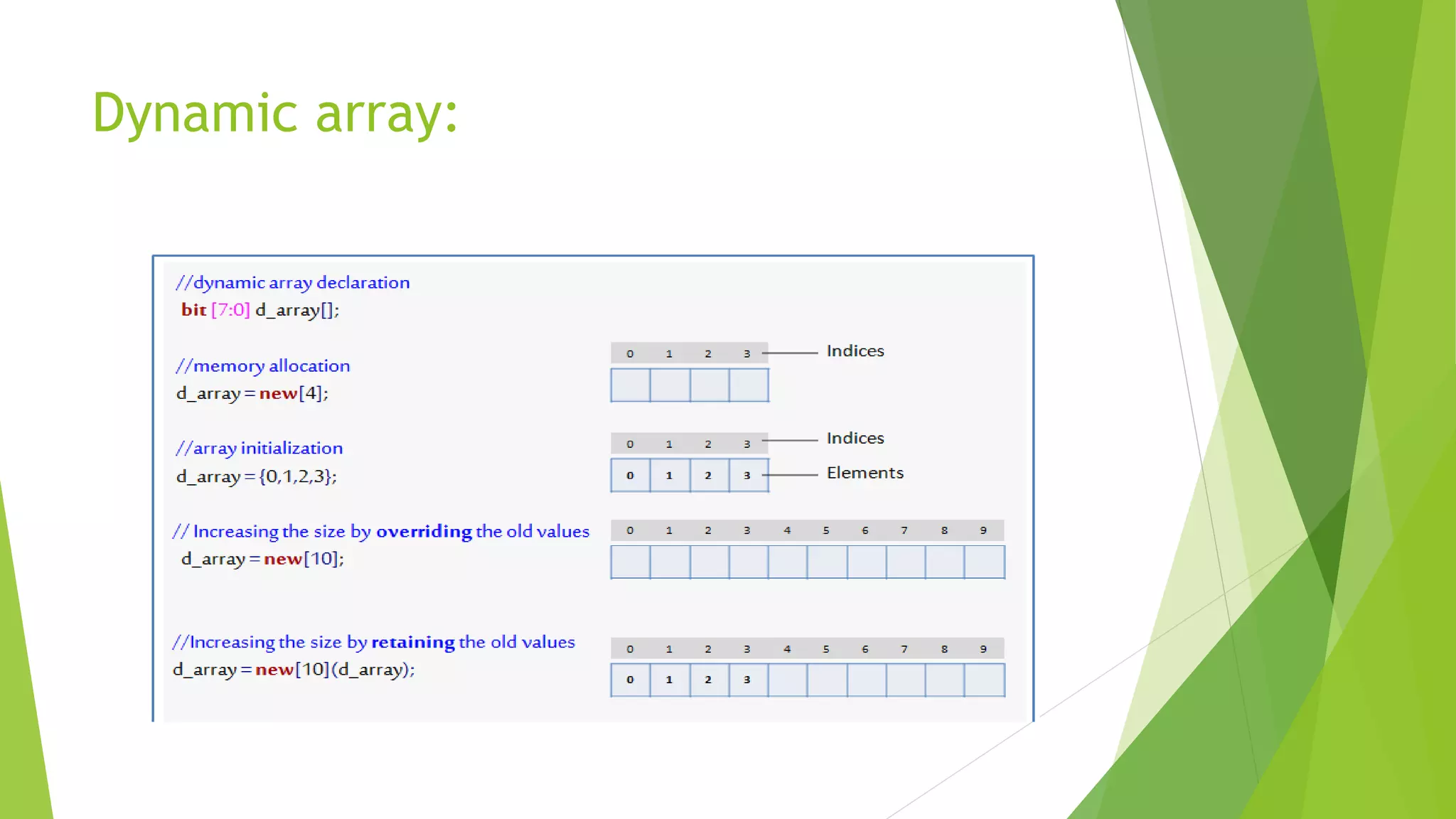
![Associative Array:
Associative array Stores entries in a sparse matrix.
Associative arrays allocate the storage only when it is used, unless like in the
dynamic array we need to allocate memory before using it.
In associative array index expression is not restricted to integral expressions,
but can be of any type.
When the size of the collection is unknown or the data space is sparse, an
associative array is a better option.
Syntax:
data_type array_name [ index_type ];](https://image.slidesharecdn.com/systemverilogbychinnifinal-201114060759/75/Introduction-to-System-verilog-21-2048.jpg)
![Associative array:
Examples:
int a_array1[*] ; // associative array of integer (unspecified index)
bit [31:0] a_array2[string]; // associative array of 32-bit, indexed by string
ev_array [myClass]; //associative array of event, indexed by class](https://image.slidesharecdn.com/systemverilogbychinnifinal-201114060759/75/Introduction-to-System-verilog-22-2048.jpg)
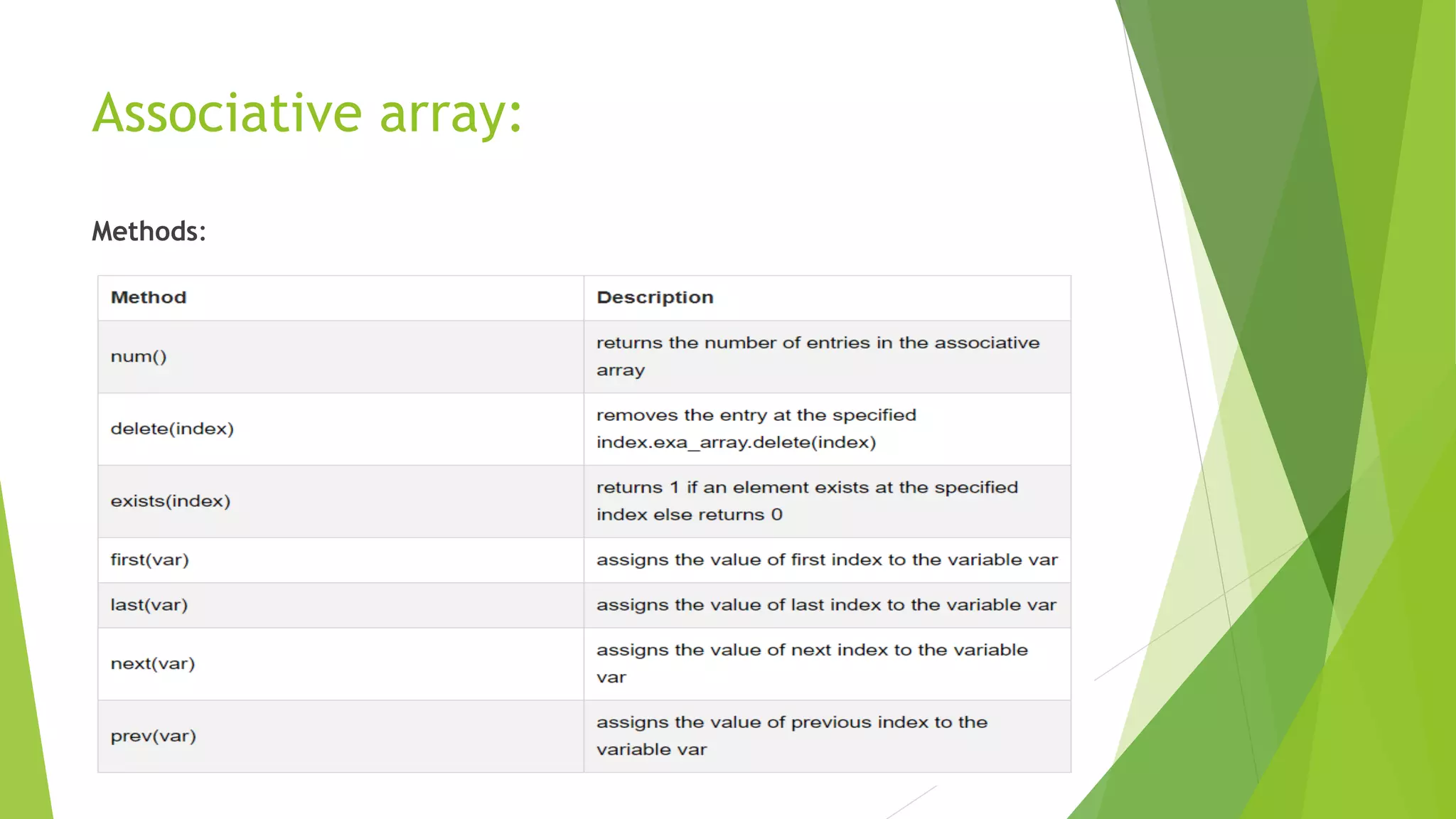
![Queue:
A queue is a variable-size, ordered collection of homogeneous elements.
Like a dynamic array, queues can grow and shrink.
Queue supports adding and removing elements anywhere.
Queues are declared using the same syntax as unpacked arrays, but specifying
$ as the array size. In queue 0 represents the first, and $ representing the last
entries.
Syntax:
Data_type queue_name[$];
Example:
bit queue_1[$]; // queue of bits (unbound queue)
int queue_2[$]; // queue of int
byte queue_3[$:255]; // queue of byte (bounded queue with 256 entries)
string queue_4[$]; // queue of strings](https://image.slidesharecdn.com/systemverilogbychinnifinal-201114060759/75/Introduction-to-System-verilog-24-2048.jpg)
